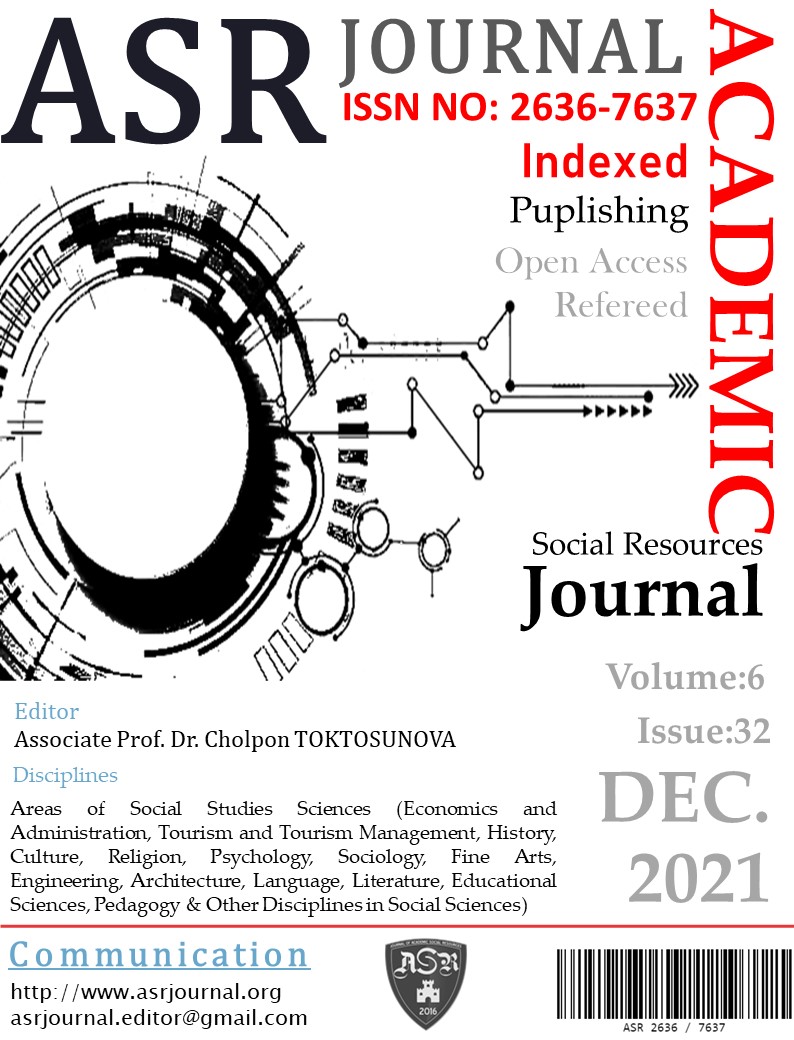KOLLEKTİF BELLEK OLUŞUMUNDA METİNLERARASILIK: SANAT, MEKÂN, PROPANGANDA GELENEĞİ VE İDEOLOJİ ÜZERİNE BİR İNCELEME
Author :
Abstract
Paul Rotha “Belgesel Sinema” isimli kitabında, John Grierson’un şu sözlerine yer verir. “Sinemayı bir kürsü olarak görüyor ve onu bir propaganda aracı olarak kullanıyorum ve böylece sinemanın sarsılmaz felsefesinin geniş alanlara yayılacağını düşünüyorum...” (Rotha, 2000:, s. 30) Grierson’un söylediği bu sözle, sinemanın sanat olma dışında toplum üzerinde çok güçlü bir etkisi olduğunun özeti gibidir. Dolayısıyla birbirinden farklı toplumları oluşturan kitlelerin bellek yönetimleri, bu güçlü kitle iletişim aracı vasıtasıyla da çok daha hızlı bir şekilde sağlanabilmektedir. Kısaca, sinemanın, Grierson’un (Şekil,3) kısmen bahsettiği gibi aslında toplum üzerinde diğer tüm plastik sanatlardan daha güçlü bir etki sağladığı açık ve nettir. Hem görsel hem işitsel olan bu sanat biçemi hem bilimsel hem sanatsal hem de teknik olarak zaman içerisinde, kendi türlerini yaratmış ve bu yaratım sürecinde de kendini canlı bir organizma gibi geliştirmiştir. Bu gelişim sürecinde de yararlandığı ve kapsadığı birçok sanat, tasarım, mimari ve bilim alanlarıyla da, ilişki halindedir. Metinlerarasılık ilişki de bu noktada devreye girer. Ekim devrimi sonrası Sovyetler Birliği çatısı altında gerçekleştirilen sanat, mimari ve sinemanın hizmet ettiği ideolojik söylemin toplumlar üzerindeki etkisi yetmiş dört yıl kadar sürmüştür. Bu araştırma kapsamında, Kolektif bellek oluşumunda ideoloji ve sanat ilişkisi sinema ve mekânlar üzerinden araştırılacaktır. İlk olarak belgesel sinemanın gelişim sürecinde ortaya çıkan propaganda geleneği ve bu geleneğin kolektif bellek oluşumunda bir iletişim aracı olarak kullanım şekli araştırılacaktır. Sonuç olarak, kolektif bellek oluşumunda yararlanılan belgesel sinema ve propaganda geleneği sanat ve mimaride, metinlerarasılık etkileşim, örnekler üzerinden açıklanacaktır.
Keywords
Abstract
Paul Rotha, in his book Documentary Cinema, includes the following words of John Grierson. “I see cinema as a platform and use it as a propaganda tool, so I think that the unshakable philosophy of cinema will spread to wide areas…” (ROTHA, 2000, p. 30) With this statement of Grierson, cinema has a very important place. Besides being an art, it has a powerful impact on society. It's like a summary that has an impact. Therefore, the memory management of the masses that make up different societies can be carried out much faster thanks to these powerful mass media. In short, as Grierson partially refers to, it is clear that cinema actually has a stronger impact on society than any other plastic arts. This art style, which is both visual and auditory, has created its own scientific, artistic and technical types over time and has developed itself like a living organism in this creation process. It is also in contact with many fields of art, design, architecture and science that it has benefited and covered in this development process. This is where intertextuality comes into play. The effect of the ideological discourse served by art, architecture and cinema, which was realized under the roof of the Soviet Union after the October Revolution, lasted for seventy-four years. Within the scope of this research, the relationship between ideology and art in the formation of collective memory will be investigated through cinema and spaces. First of all, the Propaganda Tradition that emerged in the development process of Documentary Cinema and the use of this tradition as a communication tool in the formation of collective memory will be investigated. As a result, the interaction of Documentary Cinema and Propaganda Tradition, which is used in the formation of collective memory and intertextuality in art and architecture, will be explained through examples.
Keywords
- Aktulum, K. (2018:). Sinema ve Metinlerarasılık; Filmlerarası etkileşimler ve Aktarımlar. İstanbul:
- Aktulum, K. (2018:). Sinema ve Metinlerarasılık; Filmlerarası etkileşimler ve Aktarımlar. İstanbul: ÇizgiKitabevi.
- Arda, Ö. (2020). Belgesel Film. İstanbul Üniversitesi Açık Öğretim Fakültesi: http://auzefkitap.istanbul.edu.tr/kitap/radyotelevizyonsinema_ue/belgeselfilm.pdf adresinden alındı
- Avcı, K. (2016). Kameralı Adam. Sinematek: http://sinematek.org/sinema-tarihi/77-dziga-vertov-kameral- adam-1929.html adresinden alındı
- Baygaliyeva, A. (2003). Sovyet Sineması ve Çok Uluslu Sovyet Sinemasında Bir Yönetmen: TölömüşOkeyev. İstanbul Üniversitesi Kütüphane ve Dökümantasyon Daire Başkanlığı:http://katalog.istanbul.edu.tr/client/tr_TR/default_tr/search/detailnonmodal/ent:$002f$002fSD_ILS$002f0$002fSD_ILS:867034/one?qu=%C4%B0stanbul+%C3%9Cniversitesi.+Sosyal+Bilimler+Enstit%C3%BCs%C 3%BC.+Radyo-Televizyon+ve+Sinema+Anabilim+Dal%C4%B1.&qf=AUTHOR adresinden alındı
- Bellek. (2019). Türk Dil Kurumu: https://sozluk.gov.tr/ adresinden alındı
- Bilgin, N. (2013). Canlı Bellek-Resmi Bellek. İstanbul: Bağlam Yayıncılık.Boyer, P., & V.Wertsch, J. (2011). Paylaşılan Kolektif Anıları Nasıl Yapılandırırız? P. Boyer, J. V.Werstsh,P. Boyer, & J. V.Wertsch (Dü) içinde, Zihinde ve Kültürde Bellek (s. 145). İstanbul: Türkiye İş Bankası Yayınları.
- Diktatörlük ve Mimari. (2008, Kasım). Arkitera: https://v3.arkitera.com/g151-diktatorluk-ve- mimarlik.html?year=&aID=2728&o=2718 adresinden alındı
- Edebiyat. (2016). vakıfk12.: http://edebiyat.k12.org.tr/kavramlar/Metinleraras%C4%B1l%C4%B1k/36 adresinden alındı
- Ekim (1917). (2021). Sinefil Beta: https://www.sinefil.com/title/rnzj8dg adresinden alındı Ferro, M. (2017). Sinema ve Tarih. İstanbul: Ayrıntı Yayınları.
- Güneş, Ö. (2017). Türkiye'de Belgesel Film Yapımları ve Zorlukları. N. Çakar Bikiç, & F. Özgür içinde, Belgesel /Kısa Film/ Video Sanatı (s. 68). İstanbul: Doruk Yayıncılık.
- Hauser, A. (2006). Sanatın Toplumsal Tarihi (Cilt Rokoko, Klasisizm, Romantizm, Naturalizm, Empresyonizm ve Film Çağı). Ankara: Deniz Kitabevi.
- Karadoğan, E. (2001). Belgesel Film ve Propaganda. Kameraarkası: http://www.kameraarkasi.org/ makaleler/makaleler /belgeselfilmvepropaganda.pdf adresinden alındı
- Rotha, P. (2000). Belgesel Sinema. İstanbul: İzdüşüm Yayınları.
- TDK, 2021. www.tdk.gov.tr erişim tarihi: 06.10.2021
- Seven Sisters (Moskow). (2021, Ekim 5). Wikipedia: https://en.wikipedia.org/wiki/Seven_Sisters_ (Moscow) adresinden alındı
- Soviet Modernism: 1955-1985. (tarih yok). Intercontinental Curatorial Project Inc.: http://curatorialproject.com/books/sovietmodernism195585.html adresinden alındı
- Wikipedia. (2020, Haziran 21). Agit Treni: https://tr.wikipedia.org/wiki/Agit_treni adresinden alındı





